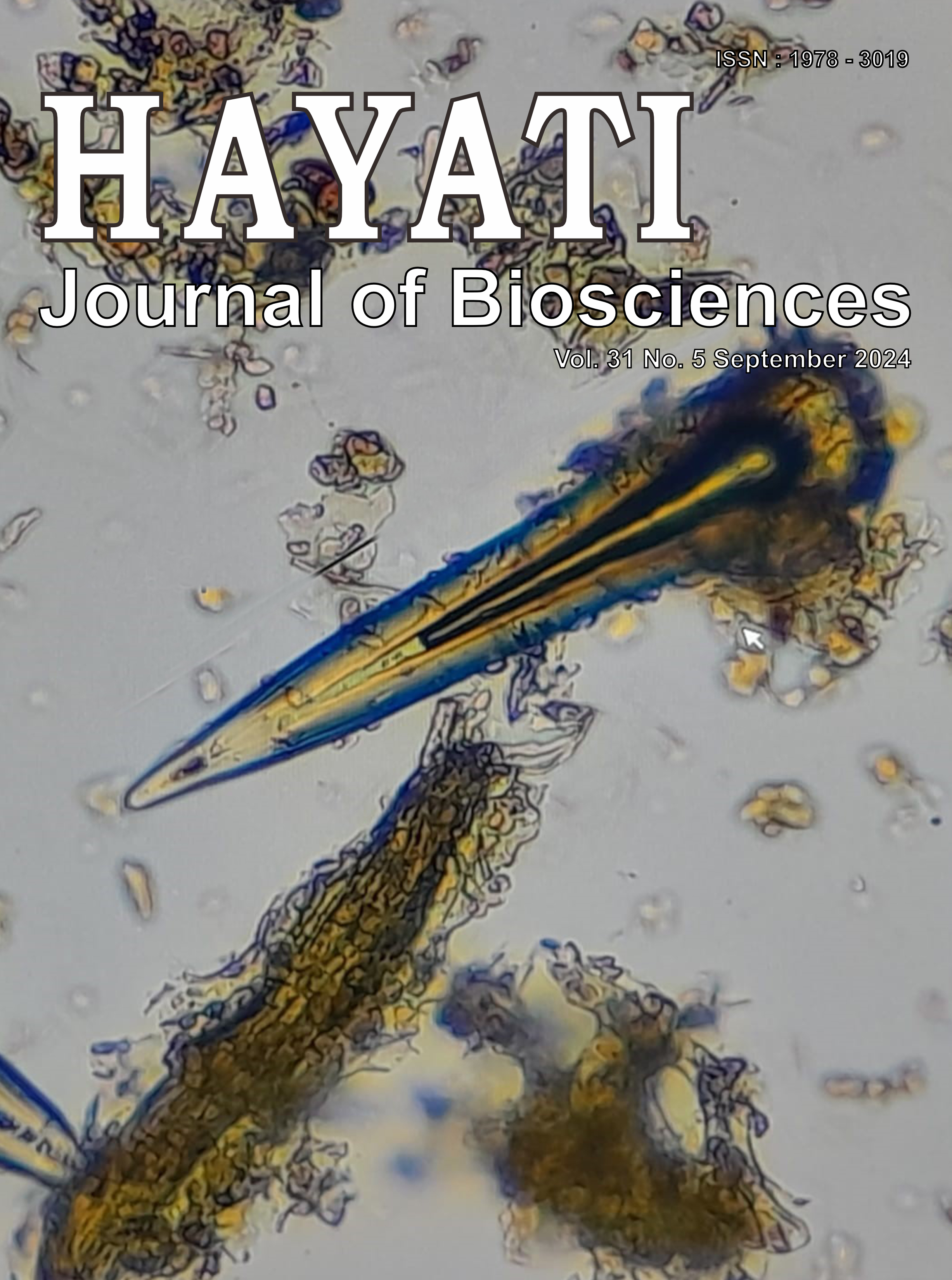Characterization of Microplastic Degrading Indigenous Bacteria from Ambon Bay Waters
Abstract
Microplastic degradation by bacteria can degrade low-density polyethylene (LDPE). This study aimed to analyze the potential of Ambon Bay bacteria for microplastic degradation, the condition of microplastics after degradation, and identification of the potential for microplastic degradation. The results of isolation revealed as many as 20 bacterial isolates, which correlated with physicochemical conditions in the waters of Ambon Bay. Nine of them could degrade microplastics as indicated by the presence of a clear zone, namely KA1, KA2, KA3, KA4, KA5, KA9, KA10, KS6, and KS8. They were checked for biofilm formation, microplastic hydrophobicity, and percentage of microplastic weight reduction. Four isolates with the highest percentage of microplastic weight reduction on day 40 were KA1, KA2, KA3, and KA10 at 36.19%, 10.16%, 28.39%, and 17.07%, respectively. The results of LDPE microplastic degradation showed differences using field emission scanning electron microscopy-energy dispersive spectroscopy (FESEM/EDS), attenuated total reflection-fourier transform infrared (ATR-FTIR), and X-ray diffraction (XRD). The bacterial isolates identified were KA1 (Bacillus cereus), KA2 (Bacillus toyonesis), KA3 (Bacillus paramycoides), and KA10 (Escherichia coli). Indigenous bacteria from the waters of Ambon Bay have the potential to degrade LDPE microplastics, which causes structural changes, decreased crystallinity, weight, and C=C groups in microplastics after degradation, with bacterial isolate KA1 identified as Bacillus cereus showing the best potential with degradation of LDPE microplastics by 36.19%.
Downloads
Copyright (c) 2024 Idham Halil Zakaria, Dian Siswanto, Irfan Mustafa

This work is licensed under a Creative Commons Attribution-NonCommercial 4.0 International License.
HAYATI J Biosci is an open access journal and the article's license is CC-BY-NC. This license lets others distribute, remix, tweak, and build upon author's work, as long as they credit the original creation. Authors retain copyright and grant the journal/publisher non exclusive publishing rights with the work simultaneously licensed under a https://creativecommons.org/

























.png) IPB University
IPB University Department of Biology
Department of Biology The Indonesian Biological Society
The Indonesian Biological Society 

